
Wall brush panels. Varieties and features Building materials

Reinforced concrete panels found large-scale use in the construction of industrial facilities, public buildings and residential buildings. At one time, more than half a century ago, their appearance in our country became a revolutionary breakthrough in the massive construction of housing, which made it possible to increase the rates of buildings in tensions.
Content
- What is reinforced concrete
- What are the brings
- How to produce priest
- What are the ways of making reinforced concrete products
- Technical Requirements for the Rube
- How transportation and storage of reinforced concrete products is carried out
- Wall brush panels
- Types of large-scale construction
- Classification of wall bribe panels
- Characteristics of various types of wall bribe panels
- Size
- Transportation Rules Wall Panels
- Storage and storage of wall panels
- House of reinforced concrete panels
- What are the types of installation of wall bribe panels
- Wall panel marking
- Price and quality of wall panels
Since then, combined technologies have stepped far ahead. A high demands are presented to modern wall clouds. They must be high strength, durable, environmentally friendly, heat efficient.
What is reinforced concrete
Reinforced concrete is called monolith from concrete and metal reinforcement. Reinforced concrete structures were used in construction for a long time, but large-scale use was obtained in the twentieth century. The combination and interaction of such different materials turned out to be very effective: concrete is firmly engaged with metal reinforcement, reliably protecting it from corrosion. Steel and concrete successfully complement each other in resistance to various types of load.
Concrete is more durable to compression, for steel, on the contrary, characteristic of high tension resistance. A high drawback is considered high density, but this problem is solved in modern conditions due to the use of cellular concrete and light mixtures of concrete with the addition of artificial or natural porous aggregates.
Constructions from reinforced concrete have fire resistance, durability. They do not require any protective measures from adverse atmospheric influences. The armature inside the concrete is not corrosion, and the concrete itself becomes even stronger. Reinforced concrete is characterized by a high bearing capacity, counteracting static and dynamic loads. Reinforced concrete products are suitable for creating structures and structures of a wide variety of forms and help to achieve expressiveness of architectural solutions.
The main volume of reinforced concrete occupies common building materials - sand, crushed stone, gravel. The use of finished products from reinforced concrete allows to provide high rates for the construction of residential buildings and industrial facilities.
What are the brings
Reinforced concrete products are divided:
For reinforcement:
- pre-tense;
- reinforced in the usual way.
By density and class of concrete:
- particularly heavy, density from 2500kg / m3;
- severe, density - 1800-2500kg / m3;
- light, density up to 1800kg / m3;
- especially light, density - 700kg / m3.
In the composition of the binder component:
- cement concrete;
- silicate concrete;
- gypsum-concrete.
By structure:
- solid;
- hollow;
- one type of concrete;
- different types of concrete.
By intended purpose
- for public and residential buildings;
- for industrial facilities;
- for engineering facilities.
How to produce priest
The production of reinforced concrete products and parts for construction work is carried out by an industrial method on specialized enterprises.
Zbby plants tend to produce products intended for the construction of residential buildings and industrial facilities. These are slabs of overlapping, partitions, wall panels, foundation blocks, farms, stair marches, columns. At the individual plants produced sleepers, mines and other reinforced concrete products of special purpose. For each product developed its own technology and reinforcement system. For example, in the production of floors and jumpers, the preset reinforced concrete is used.
What are the ways of making reinforced concrete products
Stand fashion
Designed for manufacture, large-sized products.
Ruby is prepared in fixed forms. Special mechanisms, concrete pavers and vibrators, one after another approach the stand for technological operations.
Cassette method
It is a modification of a bench method. The prodes are molded in stationary cassettes containing several metal form compartments. The form is placed the reinforcement frame and fill with concrete composition. Thermal processing is performed by contacting the walls through the walls of the forms. After heating the walls, the forms are cleaned, and reinforced concrete products are removed using a bridge crane. The cassette method is used for the manufacture of flat concrete products: overlapping panels and walls.
Flow-aggregate method
Forms with reinforced concrete products move along the technological chain from one unit to another. Thermal and wet processing occurs continuously.
Vibrating rolling method
The entire technological cycle is carried out on a single production plant of a flow - vibration rolling mill. Vibro-rolling mill is a forming conveyor belt of rubberized steel. The tape moves along the processing stations, wherein successively carried out: laying the reinforcing cage and a concrete mix, vibration compaction concrete, contact heat treatment. Thus fabricated slabs, the outer concrete wall panels from a light concrete, the panel walls.
Technical Requirements for the Rube
To reinforced concrete structures in general and wall panels, in particular, a number of technical requirements are presented:
- Exact dimensions and geometric shapes. The optimal design of nodes and connections. Accurate location of mortgage elements.
- Matching the weight and size of precast concrete structures of operational capabilities of lifting and vehicles.
- Dimensions of concrete structures within tolerances and deviations set by GOST 130-15.4-84.
- The dimensions of the mortgage elements are respectively design values \u200b\u200bwith an error of no more than ± 5 mm.
- The permissible displacement of the axes of mortgage elements for columns, beams and farms is not more than 5 mm, for other concrete - no more than 10 mm.
- The location of the mortgage parts is flush with the surface of reinforced concrete products or higher than 3 mm.
- High-quality processing of products and lack of need for additional finishes.
How transportation and storage of reinforced concrete products is carried out
Transportation of the brush usually perform on freight cars. Large-sized concrete brings are transported on special vehicles. Wall panels are delivered on panels. Unload the concrete with the crane. The storage of the progress is performed according to the requirements of GOST and TU. Reinforced concrete products fold in stacks by mounting loops up. Their position must correspond to the installation conditions during construction work. During transportation and when warehousing, damage is possible.
Therefore, it is important to comply with the rules for storing the progress, even if construction is planned in the coming days. The storage area must have a smooth surface. Contact the contact of the progress with the Earth should be excluded. If there is no carport, use underproiner material. Between the slabs of overlappings lay wooden bars to reduce tension.
Wall brush panels
Large-pointed prefabricated buildings were designed to accelerate the pace of construction. Wall panels are used to erect exterior walls of residential, public and industrial buildings.
Wide demand in construction is explained by the main characteristics of the walls of the progress panels:
- high strength;
- load bearing capacity;
- good thermal insulation;
- fire resistance;
- resistance to temperature differences.
Prefabricated wall closures are produced by an industrial way. They are made of concrete with reinforcement from steel grid or reinforcement frame.
For a warmed embodiment of internal and outer walls, thermal insulation materials are used.
Reinforced concrete panels are used for the construction of basements, technical underground, overhead floors and attic rooms.
Wall panels are the most complex element of building structures. This is explained by the complex of various technical and functional requirements: stability resistance, high heat protection and sound insulation, architectural design.
The bribes of the panels have different sizes approved by GOST. Wall brush panels are distinguished by fire resistance and high strength.
Types of large-scale construction
Large departure construction is divided into two categories: frameless and frame. This division depends on the type of wall panels: carriers and enclosing or only enclosing. In the buildings of the frameless-panel type, the load of overlappings falls on the wall panels. In frame-panel structures, the carrying function is performed by frames, and wall panels serve for heat and sound insulation.
Wall panels are used to erect exterior and inland walls. The outer panels are two types: single-layer of light or cellular concrete and layered of heavy concrete with thermal insulator. A large distribution in housing was received by single-layer wall clouds panels.
From the outside of the walls, the walls are coated with decorative mortar, concrete, weather-resistant composition or ceramic tiles. The inner surface of the wall bribes panels is aligned and prepared for painting or blending wallpaper.
In the openings of wall panels put door and window blocks. The height of the walls of the bar panels is equal to the height of the floor, the width is calculated for 1-2 rooms - 3000-7200 mm, the thickness is 200-350 mm. The dimensions of the panels of the inner walls correspond to the perimeter of the room. The thickness of the internal wall panels is 30-160 mm.
Classification of wall bribe panels
There are various classifications of wall bribes panels depending on the principle of the basis: typical signs, functional purpose in the building, composition and structure.
By construction
Panels are divided into solid and composite. The number of layers varies from one - single-layer panels, to several - three or two-layer panels. Layered wall panels are monolithic or with air layers.
- Single-layer wall panels produce low thermal conductivity from homogeneous materials. The thickness of the outdoor side is 20-40 mm. The inner side of the panel is covered with decorative trim.
- The two-layer panels have a solid structure and consist of a carrier and thermal insulation layers. As a rule, the carrier layer is made of a dense reinforced concrete and when installing is the inside. At the same time, it performs a vaporizolation function. The second layer, heat shield, is located outside and is covered with cement mortar.
- The three-layer wall panels are collected from two reinforced concrete plates with insulation between them. Connected reinforced concrete layers with welded reinforcement frames.
On carrying ability
- Carriers.
- Hinged.
- Self-supporting.
On targeted use
Wall panels are used for mounting multi-storey buildings, basement floors, underground for communication systems, attic rooms.
Characteristics of various types of wall bribe panels
Exterior Wall Bribes Panels
Height from floor and length up to 6 m. Are meant for the construction of complete-blood heated buildings. The composition is a lung-class concrete with a porous aggregate, a cellular concrete, heavy concrete with a heat saving layer.
Bribe panels for unheated buildings and inland bearing walls
The large-sized panels are height from the floor and up to 6 m long for the construction of complete blood buildings. Produce from heavy or light concrete mixes. For outdoor panels of walls, heavy concrete is used, starting with B15 class, for internal - from B12.5.
Panels of partitions
Large-sized panels with a floor with floor and up to 6 m long for the construction of full-blood buildings. For the manufacture of concrete panels, high-strength concrete or gypsum concrete, which is characterized by high frost resistance and waterproofability are used. Panel partitions are reinforced with steel wire meshes or thermo-mechanical rods of the thermo-mechanical durable steel AT-IIIC and A-III. All metal elements are processed by a special anti-corrosion composition.
Single-layer wall panels
For the manufacture of single-layer wall bribes, materials with a homogeneous structure and high thermal insulation are used. For example, lightweight cellular concrete. The outer walls of the panels are covered with a finishing layer with a thickness of 2-4 cm to protect against the action of negative factors of the external environment. Cement plaster and various facing materials are used as the finishing of the inner walls.
Wall Logging Panels Two-Layer Type
Wall jbbing panels of two-layer type most often have a solid structure. The first layer is the carrier made of high density concrete with preliminary reinforcement. The second layer serves for thermal insulation. The heat insulating layer is located on the outside and is covered with cement plaster. The carrier layer is facing the inner side and additionally performs a vaporizolation function.
Wall brush panels with three-layer structure
Today is the most popular three-layer wall reinforced concrete panels.
The three-layer panel design consists of an outdoor main carrier element to which the inner wall panels are attached. Thanks to the space between them, the heat thermal loss is reduced.
There are various modifications of multilayer panels, which consist of two reinforced concrete plates and thermal insulator (mineral and stone wool, cement fibrololite, polyurethane, phenosilicate).
The external and internal panels of the walls are combined into a single design using welded reinforcement frames made of steel. Three-layer reinforced concrete wall panels have type sizes and differ in thickness. The thickness of the wall panels is selected taking into account the heat engineering parameters and climatic conditions of the area. This type of panels are made from durable lightweight concrete or heavy concrete concrete with compressive strength B12.5 - B15. The reinforcement of the plates is carried out using welded grids or volumetric frameworks from high-strength steel. All reinforcement and mortgage elements are covered with anti-corrosion. The properties of three-layer reinforced concrete panels are strictly regulated by the requirements and regulations of GOST 31310-2005, GOST 13015-2003.
Size
The main parameters when choosing wall panels from reinforced concrete are dimensions designated in terms of the design schemes and floor layout.
The dimensions of the panels, the number and size of the openings, the technical properties and the thickness of the layers are determined according to the customer's project documentation.
Wall reinforced concrete panels have different sizes that are regulated by GOST.
Conventional panel sizes: Width with typical room and height from floor. The outer panels of the walls are equipped with mounted window and door blocks, interior panels solid or with doorways for doors.
The thickness of the panels is 20-30 cm, one square meter of the panel is 5-7 times easier for the standard brick wall of the same area. Plants for the manufacture of precast concrete, produced panels of walls for housing construction, calculated on 1-2 rooms, and for industrial structures - 6, 9 and 12 m long, the factory panels are fully prepared for installation. For example, for residential buildings, panels with window filling and glazing are made. The thickness of the wall panels depends on the climatic conditions of the region and the heat engineering parameters of the materials used and is 20-50 cm.
Transportation Rules Wall Panels
Prefabricated wall clock panels are produced in the factory. They are distinguished by large dimensions and require the use of special equipment for delivery to construction objects. Raise, immerse and unload the concrete panels using special gripping devices or for mounting loops. The magnificent panels are delivered on panels, railway platforms. Cargo vehicles are equipped with special fasteners and support devices and ensure the fixedness and safety of the panels.
Panelosevos are calculated to accommodate two panels. Panels are transported almost in a vertical position, at a low angle, a maximum of 8-10 degrees. The panels are securely fixed, which eliminates their damage or tipping.
Storage and storage of wall panels
Stored panels in cassettes in a vertical position or with a slight tilt. Each panel is placed on wooden stands with a height of 30 mm. When storing and transporting multilayer panels, the supports put only under the bearing layer. In the presence of protruding elements at the bottom of the panel, the supports are installed on 20 mm more than their height. Cassettes with panels are placed on flat sites with a solid base.
House of reinforced concrete panels
It has already been a long-standing tradition of the construction of various construction objects from structures such as wall bribes panels, overlap plates, foundation blocks. Now it is possible to build a house from reinforced concrete materials on a specially designed project.
In the buildings of the buildings, the walls of the panels are especially claimed. These are complex structures with high strength, sound insulation, heat efficiency. Modern wall panels are produced in the finished form, practically do not require additional decorative finishes and give the building a modern architectural style. According to the constructive features of the walls, the construction of a building is divided into two types: large-pointed and large-scale. In large-scale houses, the carrying and enclosing function performs a wall of blocks. Wall panels serve in large-poinner buildings of the carrier and enclosing base.
The advantages of large-passenger construction
- Fast pace of construction.
- Long service life of buildings.
- Resistance of structures to static and dynamic loads.
- Moisture resistance.
- Universal use of plates for the construction of objects for various purposes.
Disadvantages of large-passenger construction
- Heavy weight (eliminated with light aggregates).
- Lower sound and thermal insulation compared to brick houses.
- The need to use special equipment for transportation and installation.
- No possibility of controlling the wear of construction structures for early detection and elimination of the defect.
The houses built from the walls of the progress panels have a large resistance to static and dynamic loads, as well as resistance to the action of physicochemical and biological factors.
What are the types of installation of wall bribe panels
Despite the rapid development of monolithic construction, reinforced concrete products are still in great demand in the construction market due to high performance characteristics. Installation of wall panels is carried out in various ways, the choice of which is determined by the principle of assembly, the type of equipment and fixtures, constructive features of the pairing of wall and partition panels. Installation of wall bribes panels are performed by a vertical way with sealing seams. Internal finishing works and installation of technical communications are carried out with regard to the high strength of the concrete and the presence of the reinforcing device of the wall panels.
Free mounting
Free installation - installation of panels for risks on overlaps. With the help of dies and corner clamps, a stable position and temporary fastening of individual panels is ensured.
Fixed mounting
Fixed installation (limited-free) - installation using group equipment. First, the base panels (transverse and longitudinal) are selected and tightly fasten them with a permanent connection. After that, the following transverse panels are mounted. The elements of the walls immediately put in a vertical position.
Castle installation
Selfixation is a way of installation using castle locks. The lock method is suitable for panels with fixing details. At the bottom of the panel are fasten with pin-type locks, and in the upper part - lock locks.
Method of installation "on weight"
The external and internal wall panels are installed, then rare in two or four places, depending on the size of the structure using flexible sling and various traverses.
Before installing the bearing wall panels, it is determined and fixed on the floor marker of the lower edge of the wall panels (mounting horizon) and the plastic cement solution is spread.
Installation of outer wall panels start with a panel distant from the crane, after which the inner walls are installed, and then the external panels close to the wall of the wall.
After installing in place, the wall panel is selected with a free way along the lower base or clamps (lock method). Then impose the vertical position of the wall panel along the outside.
Assimate and prepare complex (group) equipment for installing panels and temporary mounting. Then mount the internal panels. After mounting the base panels put the following rank panels. They are completely fixed after installing adjacent and adjacent panels of longitudinal walls. Before installing the next inner wall panel, a concrete solution is spread in its place. After the panel reconcile, the concrete solution is sealing from both sides.
Hinged panels of multi-storey houses are installed after the construction of carrier structures. Pre-determinate the position of the prefabricated elements according to the project.
Large panels put and combined in the transverse direction. Wall panels are sealing in height. First, fix the end part of the panel in height, then fix the bottom edge of the panel and then control the vertical position of the panel.
Outdoor wall panels of single-storey houses are installed on the entire height of the building. Self-supporting wall panels are taken at the bottom of the foundation beams on the layer of solution. In all subsequent rows of panels, one on the other on the layer of the concrete solution is mounted.
Wall panel marking
Mark of wall bribe panels has an alphanumeric designation with hyphens.
- The first fragment of the symbols denotes the type of panel and dimensions: length, height (DM), thickness (cm).
- The second fragment indicates the class (brand) and the type of concrete: T - heavy concrete, L is a lightweight concrete, I am an autoclave boat concrete.
- The third marking fragment contains additional information about the characteristics of the progress panels: C - seismic resistance of more than 7 points, M - frost resistance below -40 ° C. Permeability Indicators: N - Normal, P - Lower, O is highly low. This part of the marking includes designations of the structural features of wall panels: shape; configuration of end zones, availability, view and location of openings; The presence and shape of the fines in terms of adjusting adjacent structures, the view and location of the reinforcement issues and mortgage products, the presence of reinforcement to reduce the load due to uneven deformation of the base (stepdown, swelling, frozen, rotor, bulk soil).
Example: PS 240-300-14
- PS -panel wall;
- 240 - Length;
- 300 - height;
- 14 - width.
Price and quality of wall panels
The strength and durability of wall bribes panels depends on the quality of the source materials, compliance with technological rules and calculations. Brand concrete for the manufacture of panels is selected according to specifications. For the outer layer, 3 types of coating are used: according to fresh concrete, on the solidified concrete and trim tiles.
Reinforced concrete products must comply with GOST and SNiP documents. For fire safety purposes, the limit of fire resistance and the spread of the flame on the wall is taken into account. It is necessary to ensure the quality assurance for all types of products and services provided.
Dimensions and shape of wall bribe panels, the number and size of the openings, the thickness and device of the layers are determined according to the customer's design documentation. As a rule, manufacturers of reinforced concrete products place on their sites prices and calculators, with which you can calculate the cost of wall panels, taking into account their dimensions, structure of functional accessories. You should also ask the cost of transportation of the progress and loading and unloading.
Large deposit technologies are still a promising direction in construction. The use of new materials, compositions and structural solutions in the production of wall bribes of panels allows you to optimize the building process and ultimately make housing more affordable, comfortable and safe.
New comments
Add a comment
To send a comment you need authorize.




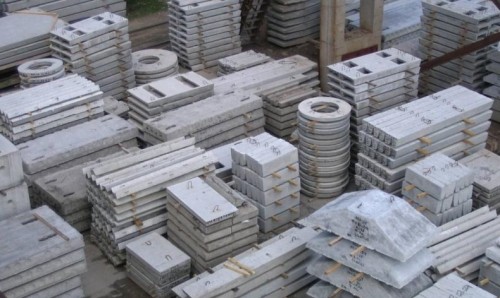
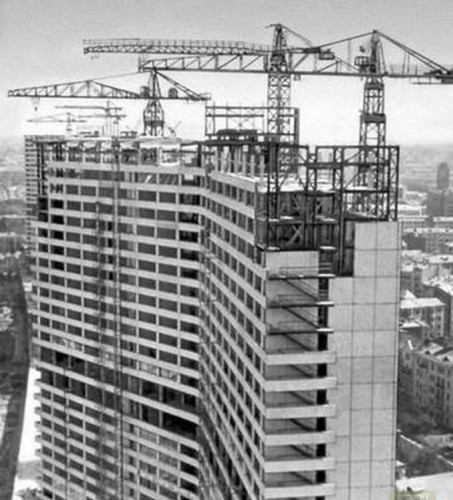
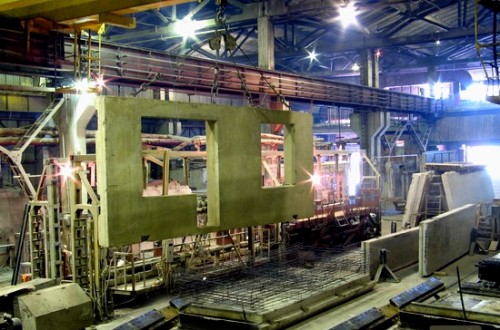
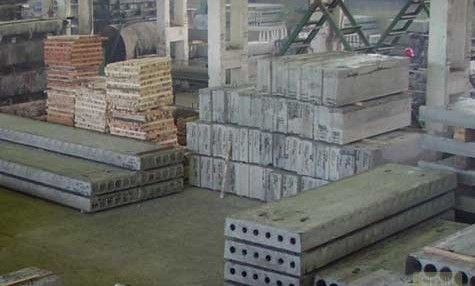
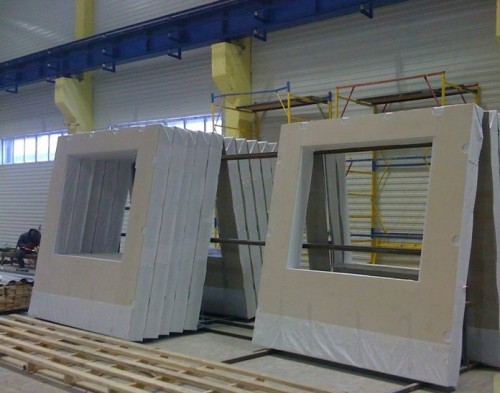
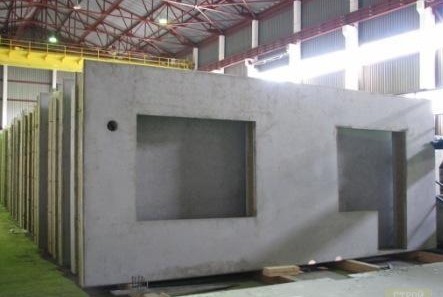
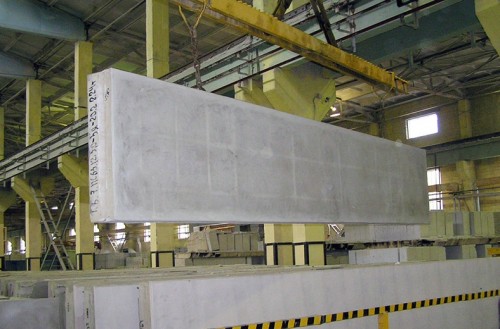

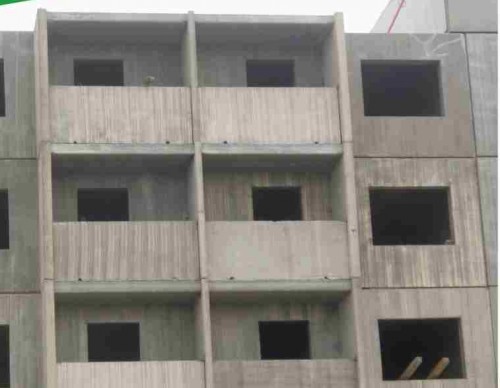
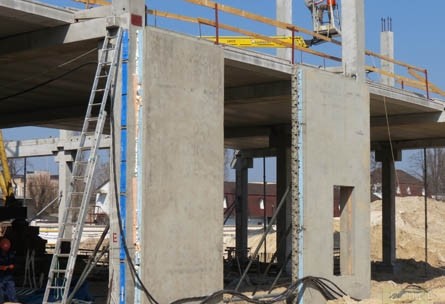
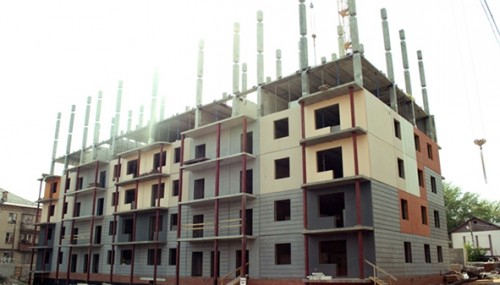
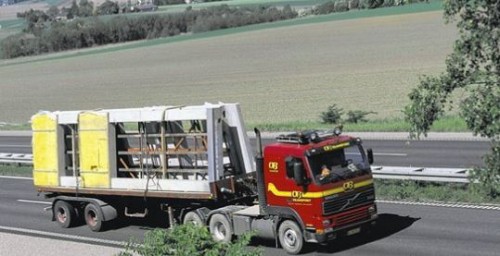
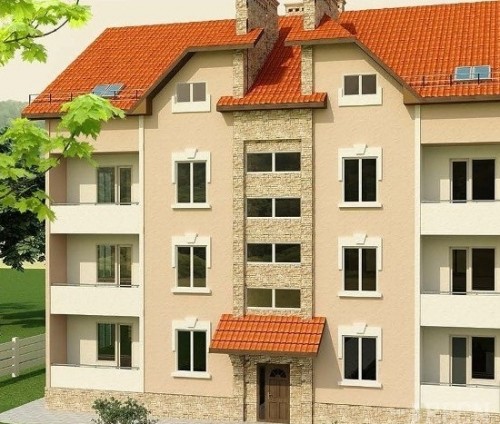
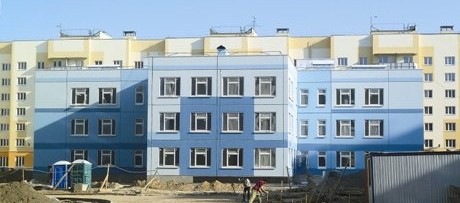
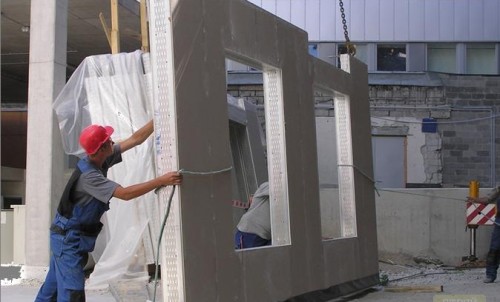
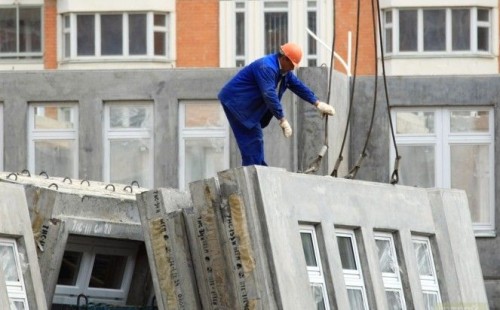
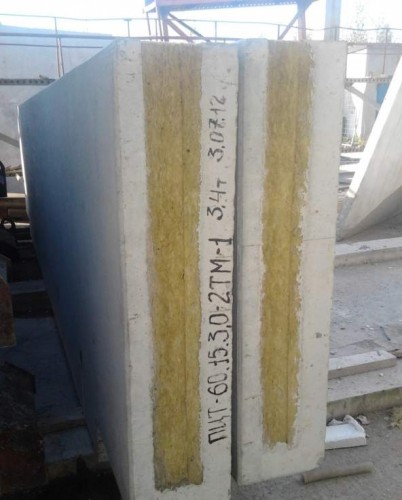
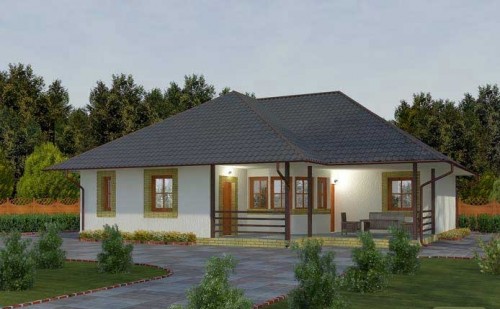















Where to buy such wall panels, or where to order such a one-storey house complex at home? In Moscow and the region they will not find them in the afternoon.
Tell me where to turn.
Thanks.